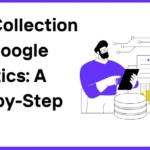Customer feedback is an invaluable tool for businesses seeking to enhance their services. It provides direct insights into what your customers appreciate, what needs improvement, and where gaps may exist. By consistently gathering and analysing this feedback, businesses can adapt to customer needs, fostering loyalty and long-term satisfaction.
Why is customer feedback important?
- Identifies strengths and weaknesses: Understand what your business does well and areas that need attention.
- Drives customer-centric improvements: Shape your offerings to align with customer expectations.
- Builds trust and loyalty: Actively listening and responding to feedback shows customers their opinions matter.
This guide will outline actionable strategies for leveraging customer feedback to meaningfully enhance service, helping your business stand out in a competitive market.
Why Customer Feedback Matters
Customer feedback is a cornerstone for understanding your audience and driving business growth. It provides valuable insights that enable businesses to improve their services, meet customer expectations, and stay ahead in a competitive market.
Key Benefits of Customer Feedback:
- Identifies Pain Points:
Feedback highlights areas where customers experience difficulties, allowing you to address issues and enhance satisfaction. - Improves Customer Retention:
Customers who feel heard are more likely to remain loyal. Acting on feedback demonstrates that you value their opinions, fostering long-term relationships. - Drives Innovation:
Many great ideas originate from customer suggestions. Feedback can inspire new products, services, or processes that cater to unmet needs. - Boosts Brand Image:
Businesses that actively engage with customer feedback are often perceived as transparent and customer-focused, which builds trust and enhances reputation.
By embracing customer feedback as a strategic resource, businesses address immediate concerns and create a foundation for sustained growth and customer loyalty. This proactive approach helps align services with customer expectations, ensuring continued success.
Collecting Customer Feedback: Methods That Work
Gathering customer feedback effectively is the first step to leveraging it for meaningful improvements. Employing the right strategies ensures that the feedback you collect is comprehensive and actionable. Here are some of the most effective methods:
1. Surveys and Questionnaires
- Use tools like SurveyMonkey or Typeform to design short, targeted surveys.
- Include a mix of closed-ended questions for quantitative data and open-ended ones for detailed insights.
2. Online Reviews
- Monitor feedback on platforms such as Google, Yelp, and social media.
- Politely ask satisfied customers to leave honest reviews to build a strong online presence.
3. Focus Groups and Interviews
- Conduct group discussions to gain broader perspectives on your services.
- Use one-on-one interviews for deeper, qualitative insights that reveal unique customer experiences.
4. Feedback Forms
- Integrate forms on your website or app to make it easy for customers to provide opinions.
- Keep forms user-friendly and concise to encourage participation.
5. Social Media Listening
- Leverage tools like Hootsuite or Brandwatch to monitor mentions and discussions about your business.
- Identify trends or recurring concerns shared by your audience.
Businesses can gain a holistic understanding of customer sentiment by collecting feedback through multiple channels. This ensures that every voice is heard, helping identify trends and areas for improvement while building customer trust.
Analysing Customer Feedback: Turning Data into Insights
Collecting customer feedback is just the beginning; effectively analysing it turns raw data into actionable insights. A structured approach ensures that improvements can be prioritised and customer needs addressed efficiently.
Steps to Analyze Customer Feedback:
- Organise Feedback:
Use tools like Excel or CRM platforms to categorise feedback into key themes such as product quality, customer service, or delivery speed. This organisation helps identify areas requiring immediate attention. - Identify Patterns:
Look for recurring comments or trends in the feedback. For example, frequent mentions of delays could indicate operational inefficiencies that must be addressed. - Prioritise Issues:
Focus on high-impact areas that affect the majority of customers. Addressing these areas first ensures significant improvements with the most excellent customer satisfaction. - Leverage Feedback Analysis Tools:
Tools like Qualtrics, Zendesk, or Google Forms Insights offer advanced sentiment analysis and data visualisation. They can highlight trends, customer sentiment, and critical touchpoints that need improvement. - Collaborate with Teams:
Share the analysed feedback with relevant departments, such as marketing, customer service, or operations. Collective understanding ensures that improvements are aligned across the organisation.
By systematically analysing feedback, businesses can pinpoint their strengths and weaknesses. This data-driven approach ensures effective resource allocation, leading to better customer experiences and long-term success.
Using Feedback to Enhance Services
Customer feedback becomes valuable only when it leads to meaningful action. Implementing changes based on customer insights ensures your services align with expectations, driving satisfaction and loyalty. Here’s how to use feedback effectively:
Steps to Improve Services with Feedback:
- Address Common Complaints:
Identify recurring issues from customer feedback. For instance, if customers frequently report long wait times, focus on streamlining processes to reduce delays. - Leverage Positive Suggestions:
Highlighted strengths in customer feedback can inspire enhancements. For example, if customers appreciate a specific feature, consider expanding or refining it further. - Pilot Test Changes:
Before implementing major updates, test them with a small group of customers. This ensures that the changes effectively address the problem and meet customer expectations. - Communicate Updates:
Inform customers about the changes you’ve made based on their input. Share updates via email, social media, or on-site notifications. This transparency fosters trust and shows customers that their opinions matter. - Monitor Impact:
Measure the success of your improvements using metrics such ase customer satisfaction scores (CSAT), repeat purchase rates, or online reviews. Based on these insights, adjust strategies as needed.
Businesses can create a customer-focused environment by actively using feedback to enhance services. This approach improves service quality, strengthens customer relationships, and boosts long-term growth.
Common Mistakes to Avoid When Using Feedback
Customer feedback is valuable for business improvement but can lose its potential if not appropriately managed. To ensure you’re making the most of feedback, avoid these common mistakes:
1. Ignoring Negative Feedback:
Dismissing complaints can damage your brand reputation. Always address negative feedback promptly and professionally to demonstrate that you value customer input.
2. Overgeneralizing Feedback:
Don’t assume feedback represents broader trends without supporting data. Analyse feedback carefully to understand whether it’s an isolated or systemic issue.
3. Failing to Act:
Collecting feedback without implementing changes frustrates customers. If they see no improvements based on their input, they may become disengaged and less likely to share their opinions.
4. Lack of Transparency:
If you fail to inform customers about your changes based on their feedback, they may lose interest in and trust in your brand.
By avoiding these mistakes, businesses can maximise the value of customer feedback while maintaining trust and loyalty.
Conclusion
Customer feedback is essential for businesses looking to enhance their services and foster growth. By collecting valuable insights, analysing them, and taking action based on customer input, businesses can improve customer satisfaction, build loyalty, and remain competitive. Implement these strategies today to maximise the potential of customer feedback and ensure your business truly aligns with your customers’ needs.
This approach will help create lasting improvements and strengthen your relationship with your audience.






Leave a Reply